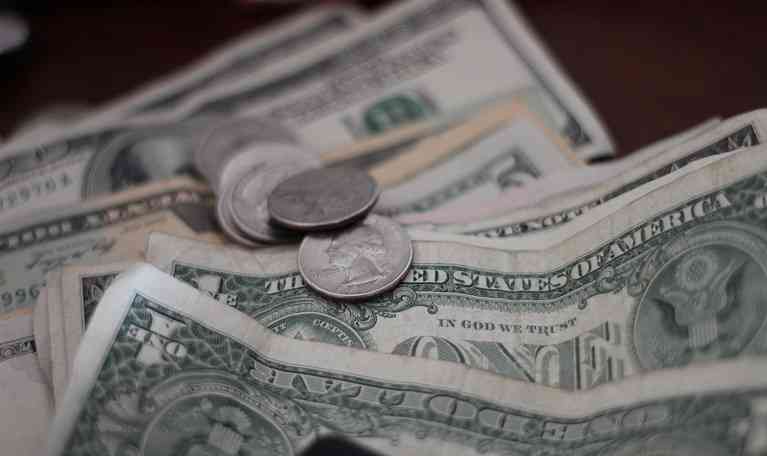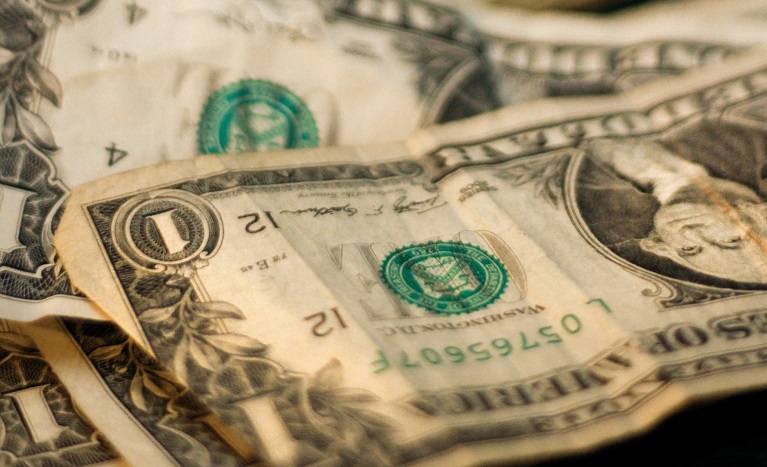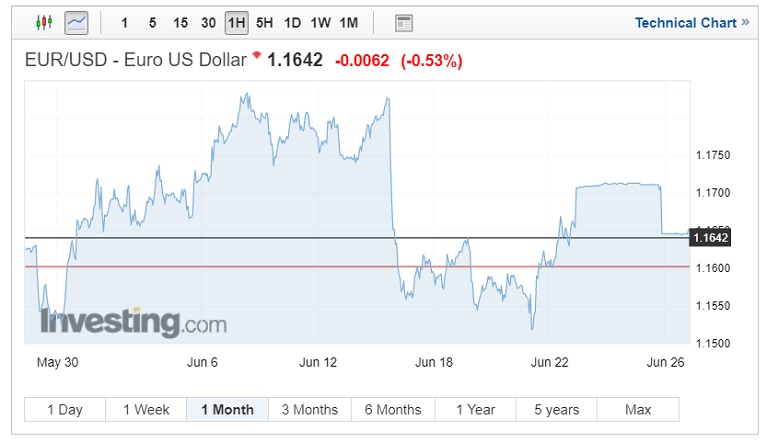Following last weeks US interest rate rise of 0.25% the USD initially benefitted with the Federal reserve bank living up to Markets expectation of a rate rise. However, the fallout with some of the USA’s key trade partners has quelled the Dollars gains against a basket of currencies.

Latest US interest rate rise
Essentially a June interest rate rise was nailed on and markets had priced in the monetary policy change. Despite this, the Dollar initially rose, supported by robust jobs market and a solid US economy US interest rates were increased from 1.75% to 2%.
The US economy has been increasing at a solid rate and demonstrated a good upturn from May’s outlook. Household spending which had been previously described as moderate in the last meeting is now increasing, therefore providing a better outlook for the FED.
Unemployment in the US has remained at its lowest levels in over 18 years at just 3.8%, a stat that Donald Trump is very proud to announce. Impressively the US has added created more jobs every month for the last 92 months. While the latest average earnings data is now showing increases in US pay packets.
Just a few months back there were fears that the US stock market could be overheating or cooling depending on how viewed. These fears so far haven’t been realised and trading levels remain close to highs.
Inflation like average earnings is showing signs of an upturn, recently the labour department published figures showing that US inflation had increased by 2.8% this year, the most significant gain since February 2012.
Despite this and the initial gains, the Dollar experienced the Greenback remains blighted by trade war speculation and appetite for the Dollar has been restrained.
Trade concerns spooking markets
Many facets of financial markets have been affected by speculation of long-term tariffs that will be imposed on the USA’s key trading partners. Plus, the possibility of an all-out trade war with China will have certainly spooked investors. Tech stocks have suffered in particular due to the potential limits being made on Chinese investments to the sector.
Although the US economy shows the very best signs of life the risk a trade war would naturally have implications especially if a compromise isn’t found against the US and other nations.
Despite this, the economy now posses all the hallmarks to prosper. The Job market remains stable, incredibly there are now more jobs on offer than people to fill the positions. Currently, the economy has 6.7 jobs positions which need filling and only 6.4 m available to fill them.
If Trump was able to find common ground with his trade numbers, the growth could be further supported. Whilst one would imagine that volatility could continue, both relating to trade and the NAFTA agreement. The underpinning of the US economy should see past these distractions, especially if the monetary policy continues as anticipated.
Further rate hikes likely?
During its two-day FED meeting as well deciding to raise interest rates in the US this month, they also discussed future rate hikes a point which was touched upon by the FED chair Jay Powell. Powell confirmed that market could indeed expect further rate hikes this year:
“The Committee expects that further gradual increases in the target range for the federal funds rate will be consistent with sustained expansion of economic activity, strong labour market conditions, and inflation near the Committee’s symmetric 2 percent objective over the medium term.’’
Though markets had expected this would be the case the evermore hawkish tones almost certainly would have helped the Dollar further.
US dollar performance
Although much of the dollar weakness has been caused by growing tension relating to trade the EUR/USD dropped the most significantly this month following the ECB press conference. Draghi reiterated his ‘prudent and persistent’ approach to monetary policy. Following his comments, EUR/USD dropped from 1.1824 to 1.1569. The Euro has since capitalised on the trade and NAFTA speculation and is currently trading at around 1.1643 trade fears apparently ease, for now at least.
USD forecast
If as is largely reported fears of a trade war demise, the long-term outlook for the Dollar looks a lot brighter. The prudent approach to the Eurozone’s monetary policy is clearly becoming less popular with markets, hence the significant declines in the pair following the ECB press conference with Mario Draghi. FX desks are therefore expecting gains for the Dollar against both the Euro and Pound.
If however trade war themes are regurgitated the only winners will become a safe haven for currencies such and the Swiss Franc and Japanese yen.

